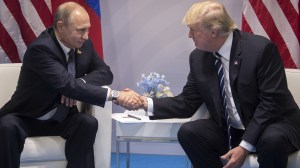Stay updated with the latest - Click here to follow us on Instagram
BMC elections: Budget grew manifold, but spend on healthcare down
Reality looks grim on the ground even as all political parties promise to make healthcare less expensive and more accessible in the run-up to civic elections.
 The inadequate primary healthcare network burdens tertiary care hospitals like the KEM Hospital. Express Archive
The inadequate primary healthcare network burdens tertiary care hospitals like the KEM Hospital. Express Archive
In Behrampada, a slum settlement outside the Bandra railway station, whenever Sana Shaikh, a local resident, visits the nearby civic dispensary, she has to wait for hours for her turn. The dispensary, she says, has shortage of medicines too. “They (the medics) always refer us to the Bhabha hospital (at the opposite end of the suburb),” she says. In the end, Shaikh and others like her end up travelling over 8 km to the KEM Hospital even for X-rays and scans because even the peripheral Bhabha Hospital does not run a 24×7 facility. The Brihanmumbai Municipal Corporation (BMC), the country’s richest municipality, has increased its annual budget manifold over the past decade or so, but the spend and the status of the city’s primary healthcare infrastructure have failed to keep pace. Official statistics reveal that Mumbai has only 183-odd primary healthcare centres for a population of over 12 million, which roughly translates into one centre for every 65,000 people. This is way off the mark from the accepted norm of having one centre for every 20,000 people.
More from Express:
The inadequate primary healthcare network has a cascading effect as it burdens the three main tertiary care hospitals — KEM Hospital (Parel), Lokmanya Tilak Municipal General Hospital (Sion), and BYL Nair Hospital (Byculla). Depressing scenes of patients being forced to lie on the hospital floor due to lack of beds and increasing patient load are a commonplace in these hospitals. At the same time, beds in some of the poorly equipped peripheral hospitals such as Kandivli’s Shatabdi Hospital and Jogeshwari’s Trauma Care Hospital remain 50 per cent vacant.
In slum settlements, where half of the city’s population reside, lack of healthcare is the biggest concern after food and shelter. “Poor sanitation leads to several infections. People need easy access to doctors in dispensaries, which is missing,” says Khatoon Shaikh, a member of the Bharatiya Muslim Mahila Morcha.
But a poor spend on upgrading the primary health infrastructure has meant that quality healthcare remains inaccessible for most. Consider this. The civic body managed to spend only 9 per cent out of the Rs 56.2 crore released by the Centre under the National Health Mission (NHM) in 2014-15. In urban pockets, the focus under NHM is improving the health infrastructure around slum settlements and the poor. Even in 2015-16 and 2016-17, the expenditure under this head was just 41 per cent and 48 per cent of the released funds, respectively, reveal statistics.
While 147 additional PHCs are required, BMC has since 2013, when the NHM was launched, set up only 114 of them. “When BMC has funds, why is it not spending? Implementation of NHM is mostly on papers. Appointment of ASHA workers has also not taken place,” says Abhijeet More from Jan Swathya Abhiyaan, adding that health budget spending should focus on primary care to reduce referrals.
The capital spend on other healthcare projects has also declined despite an increase in overall health budget. The Zakaria Committee Report (1963) recommends higher allocation for health in budget. In the late nineties, the health budget in the civic body accounted for 20 per cent of the overall spend. Circa 2017, this has come down to 10 per cent. In 2013-14, the BMC spent Rs 436.14 crore. The amount came down to Rs 404.89 crore in 2015-16.
Last December, Naseem Bano, a resident of another slum settlement in Govandi, took her newborn baby to Shatabdi Hospital for admission to the neonatal intensive care unit (NICU), but with no doctor and intensive facility, she was referred to Sion hospital where the neonatal ward already had two children on one bed. Naseem was then referred to a private hospital where her son passed away. “We need at least basic facilities in Shatabdi. At night, there are no doctors for delivery. For most tests, we are asked to visit Sion hospital,” says Farooq Shaikh, a local resident.
According to him, slum-dwellers commonly suffer from cold and fever, for which dispensaries fail to provide treatment, forcing several to visit private doctors.
NCP corporator and health committee member Saeeda Khan explains, “There are 18 peripheral hospitals but acute shortage of doctors has affected services. The World Health Organisation recommends a doctor-patients ratio of 1:450. Here, it is 1:1100.” She says she floated a proposal four years ago to appoint BAMS doctors to bridge the medical gap, but it has not received approval in the last.
Former health committee chairperson Geeta Gawli, however, claims health infrastructure is improving in Mumbai. “We appointed 2,000 nurses, ward boys and para-medical staff three years ago. Several dispensaries were repaired and the process is still ongoing,” she says.
The major healthcare expenditure by the BMC has been on procuring eight GeneXpert machine for accurate tuberculosis diagnosis, the burden of which is significant in Mumbai. The machines are expected to rise to 22 this year. BMC has also opened a new medical college at Vile Parle’s Dr R N Cooper Hospital to increase medical seats. Focus on stroke, geriatrics and diabetes has been strengthened with clinics regularly screening patients at KEM, Sion and Nair hospitals.
Most importantly, a concept of ‘paying beds for middle class’ was started in several hospitals in 2013 for patients who want a private hospital room for Rs 900.
However, upgrade of maternity homes and dispensaries that offer basic care has been at a slow pace. Caesarean facility continues to remain limited to maternity homes due to shortage of anaesthetists and pediatricians. While BMC had announced human milk banks for newborns at two hospitals, the project is running a year late.
“The problem is in implementation. We sanction a fat budget but if it’s not getting spent on health facilities, how will infrastructure develop,” asks Dr Ram Barot, BJP corporator and health committee member.
BMC was forced to add 1,352 beds to KEM, Sion and Nair hospitals in 2016 because of increasing patient load. Health experts, however, point to the much needed diversion of expenditure to develop peripheral hospitals.
In the run-up to the February 21 poll, political parties are promising advanced healthcare facilities to the common man. In its manifesto, Shiv Sena has promised “health at doorstep” and OPD-on-wheels apart from a dedicated hospital to treat diabetes. Party chief Uddhav Thackeray has even announced free health cover to Mumbaikars.
The Congress too has promised free healthcare for women. The BJP, meanwhile, is promising special OPDs for diabetes and hypertension in each hospital. But for the common man, it is an urgent upgrade of primary healthcare that matters the most.







